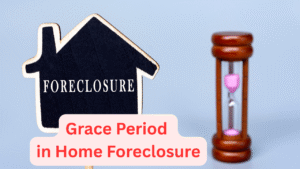 Understanding the Grace Period in Home Repossession: What You Need to Know
Understanding the Grace Period in Home Repossession: What You Need to Know
When homeowners fall behind on mortgage payments, they often enter a critical window of time known as the grace period. This period can be the difference between saving a home and losing it to repossession. Understanding how grace periods work in the context of home foreclosure can help borrowers take timely action and avoid the devastating consequences of losing their property.
What Is a Grace Period in Home Repossession?
A grace period is a short window of time after a missed mortgage payment during which the lender does not charge a late fee or begin the foreclosure process. Typically, this period ranges from 10 to 15 days, depending on the terms of the mortgage agreement. While it may not seem like much time, it can provide a crucial buffer for homeowners facing temporary financial hardship.
Why Is the Grace Period Important?
Grace Periods exist to give homeowners a chance to catch up on their payments without penalty. During this time:
- No late fees are charged (as long as payment is made before the grace period ends).
- Credit scores are not immediately affected.
- Foreclosure proceedings do not begin.
However, if the payment is not made by the end of the grace period, the loan is considered delinquent. From there, lenders may begin sending notices and eventually start the foreclosure process if the default continues.
How It Works: An Example
Let’s say your mortgage payment is due on the 1st of each month. Your loan has a 15-day grace period. This means as long as you pay by the 15th, you avoid late fees and stay in good standing with your lender. On the 16th, a late fee is added, and your loan is officially marked as delinquent.
If the delinquency continues for 30, 60, or 90 days, the lender will report it to credit agencies, and the risk of foreclosure increases significantly.
Grace Period vs. Foreclosure Timeline
It’s important to understand that the grace period is not the same as the foreclosure process timeline. Once a loan is more than 30 days late, lenders may initiate default notices, which can eventually lead to repossession if the loan is not brought current. The grace period only applies immediately after the payment due date and is meant for short-term payment delays.
Tips for Homeowners During the Grace Period
- Act Fast: Don’t wait until the last day of your grace period. Make your payment as soon as possible.
- Communicate With Your Lender: If you’re facing financial trouble, talk to your lender right away. They may offer forbearance or loan modification options.
- Know Your Loan Terms: Not all mortgages have the same grace period. Review your contract so you’re clear on the exact number of days.
- Avoid Repeated Late Payments: Consistently relying on the grace period may damage your financial reputation and relationship with your lender.
Final Thoughts
The grace period in home repossession situations offers homeowners a vital opportunity to avoid late penalties and stay current on their mortgage. While it’s not a long-term solution, it provides a short-term buffer to help protect your home. If you’re struggling with mortgage payments, don’t ignore the warning signs—use this period wisely, seek help early, and explore all available options to avoid foreclosure.
#grace period #home repossession #mortgage default #foreclosure timeline #missed mortgage payments #home foreclosure help #prevent home repossession #grace period mortgage